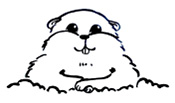Reindeer
Class: Mammalia
Order: Artiodactyla
Family: Cervidae
Genus: Rangifer
Scientific Name: Rangifer tarandus
Description: Caribou are the only member of the deer family in which both sexes have antlers. In Scandinavian countries, caribou are known as reindeer; semi-domesticated and historically used as work animals. Weighing up to 300 kg (660 lbs), caribou have many subspecies with varied appearances. Colours range from white through grey to brown with white underparts, although all share a large head, short, stocky build and large, flattened hooves. There are many names for this hardy arctic deer; “caribou” is derived from the Mi’kmaq word “qalipu” which means snow shoveler.
Distribution and Habitat: Found in a widespread area from the high arctic south to subarctic mountain ranges in North America, northern Europe and Siberia, caribou number in the millions but many subspecies are in decline as a result of climate change and industrial disturbance. Caribou used to be found in Nova Scotia (woodland caribou) but have been extirpated (locally extinct) since the early 1900s. Many subspecies of caribou migrate thousands of kilometres each year, travelling along the same routes between their northern summer breeding areas and southern overwintering territories, the longest migration of any terrestrial mammal in the world.
Diet: Caribou are ruminants like the other members of the deer family. They have a unique enzyme in their digestive tract which allows them to digest lichens, the largest component of their diet. When available, they will also eat willow and birch leaves, sedges and grasses as well as mushrooms.
Life Cycle: Like other members of the deer family, male caribou (bulls) will use their antlers to fight with other males in the competition for harems during rutting season every autumn. Calves are born in May/June, are grazing in less than 2 months and remain with their mother for a year. Female caribou (cows) grow antlers that are much thinner and less elaborate than those of the males. While mature males will shed their antlers around December and younger males midwinter, females will frequently keep their antlers until they have calved and their young are a few days old. It is thought that this difference may be a result of needing self-defense when they are newly mature, or when they have newborn young to protect. Predators of caribou include wolverines, bears, wolves and surprisingly, golden eagles as young calves are small enough to be snatched and carried away.
Adaptations: Broad hooves allow caribou to travel confidently over the snow, act like paddles to help them swim across rivers and function as shovels to effectively dig through snow to uncover lichens. Sturdy, compact bodies and a two layer coat of hair helps them to keep warm in the cold arctic environment.
Did you know? Caribou are very fast runners, reaching speeds of 80 km/h (50 mph). In fact, a one day old caribou calf could outrun the fastest human sprinter.


